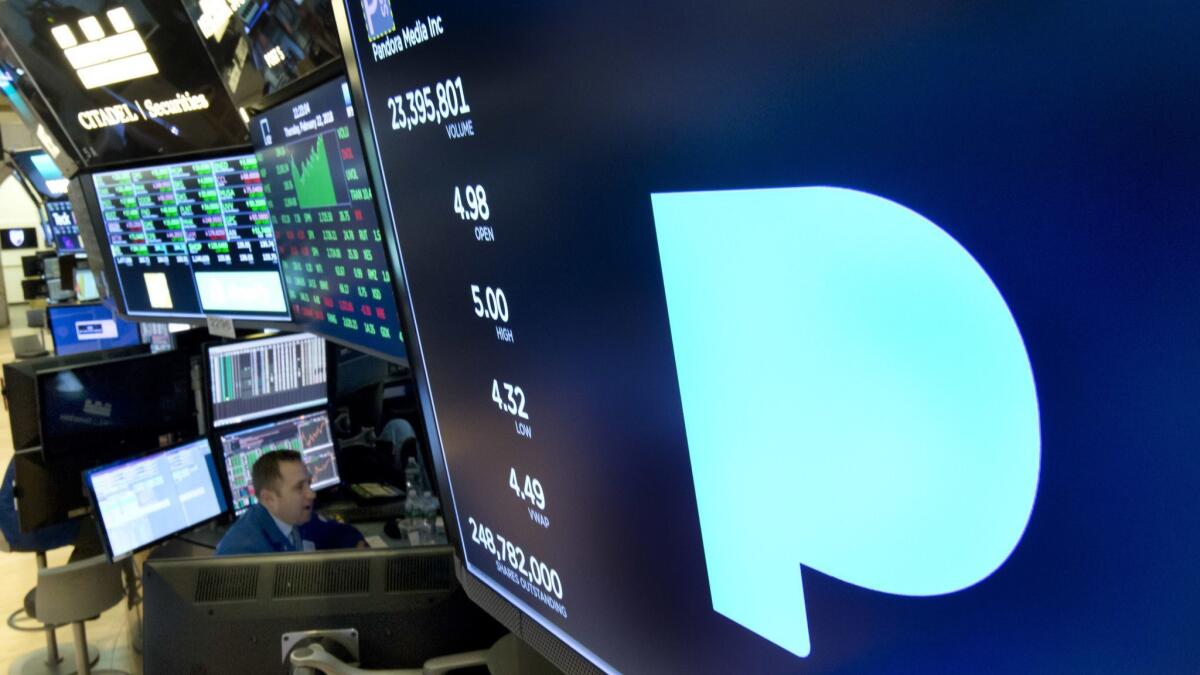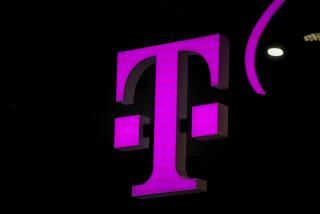SiriusXM to buy Pandora in acquisition valued at $3.5 billion

Subscription radio service Sirius XM Holdings Inc. will acquire streaming music firm Pandora Media Inc. in a deal valued at about $3.5 billion, the two companies said Monday.
The all-stock transaction is expected to allow SiriusXM to expand beyond its expertise in in-car entertainment. SiriusXM has more than 36 million subscribers in North America, while Oakland-based Pandora has more than 70 million monthly active users.
SiriusXM Chief Executive Jim Meyer said that the acquisition diversifies the company’s revenue streams and its technical capabilities.
‚ÄúThis transaction is all about creating growth opportunities together that are not available to the separate companies,‚ÄĚ Meyer said in a call with investors.
SiriusXM, controlled by cable TV investor John Malone‚Äôs company Liberty Media, was already well acquainted with Pandora. Last year, the New York company made a $480-million cash investment in Pandora, a deal Meyer said would help SiriusXM expand into the ‚Äúad-supported digital radio business, a space where SiriusXM does not play today,‚ÄĚ according to a statement released at the time. As of Monday, SiriusXM owned a 15% stake in Pandora.
The Pandora acquisition would give SiriusXM another opportunity to solicit users who may be reluctant to pay for a subscription. This year, many of the 23 million people trying out SiriusXM are not expected to sign up after their trial ends, Meyer said.
SiriusXM could also promote its content to a wider base of Pandora users, such as highlights from popular programs such as ‚ÄúThe Howard Stern Show,‚ÄĚ said Kristopher Hull, head of brand guidance for market research firm Kantar North America. ‚ÄúIt allows each (business) to really complement each other,‚ÄĚ Hull said.
Though Pandora was an early pioneer in the streaming music business, competitors such as Spotify and Apple Music are growing at a fast pace. Apple had an advantage as a popular smartphone maker and iconic consumer brand, while Spotify came up with innovative features that worked with wearable devices, such as providing music timed to the beat of a user’s workout, Hull said.
By the time Pandora offered its own version of an on-demand streaming service, analyst Michael Pachter said, the Oakland firm was late to the game. ‚ÄúThey were starting at zero‚ÄĚ and trying to catch up, said Pachter, a managing director of equity research with Wedbush Securities.
This year, Pandora was estimated to have 75.9 million listeners in the U.S., compared with Spotify’s 58.4 million, according to research firm EMarketer. But come 2020, Spotify’s listener base will grow to 70.9 million, while Pandora’s will decline to 75.5 million, according to EMarketer’s forecast.
Pandora has gone through leadership changes. In June 2017, Pandora co-founder Tim Westergren, who had returned to the chief executive job just 15 months earlier, stepped down from that role and left the company’s board.
Pandora brought in Sling TV chief executive and founder Roger Lynch at the helm a few months later. By the end of 2017, Pandora had lost about 8 million listeners year-over-year. The company set out to improve its technology for advertisers, and by July, Pandora had seen subscription revenue up 67%, according to the company’s second-quarter financial results.
The deal has already been unanimously approved by Pandora’s independent directors, as well as SiriusXM’s board of directors. It is expected to close in the first quarter of 2019 and will need the approval of Pandora shareholders.
Twitter: @smasunaga
Twitter: @thewendylee
UPDATES:
5:25 p.m.: This article was updated with analysts’ reaction to the deal.
7:20 a.m.: This article was updated with more information about SiriusXM’s previous investment in Pandora and details about Pandora’s financial history.
This article was originally published at 6:55 a.m.
More to Read
Inside the business of entertainment
The Wide Shot brings you news, analysis and insights on everything from streaming wars to production ‚ÄĒ and what it all means for the future.
You may occasionally receive promotional content from the Los Angeles Times.












